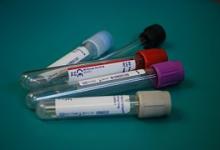Biologic Switching in Psoriasis Save

A systematic review and meta-analysis found that biologic switching was effective in a significant number of psoriasis patients; but there may be a price to pay.
Patients with psoriasis may be required to switch therapies, for a variet of reasons (insurance, costs, effectiveness, fatigue, or adverse effects). This metanalysis examined randomized clinical trials (RCTs) in adult plaque psoriasis patients with a switch from 1 biologic agent to another biologic either within the same or different drug class. The primary end point was the PASI 90.
The review included 24 RCTs and 12 661 psoriasis patients and 8 switching categories. With interclass biologic switching significant differences were noted in PASI 90 (OR 6.53; 95% CI, 2.58-16.51), with faster short-term and more stable long-term effectiveness.
Improved effectiveness was seen when switching from:
- anti−tumor necrosis factor (TNF)-α agents to anti−interleukin (IL)-23p19 agents
- anti−IL-12/23p40 agents to anti−IL-23p19 agents
While there were no difference in overall safety outcomes with switching [serious AEs (OR, 1.63; 95% CI, 0.72-3.69), severe AEs (OR, 1.40; 95% CI, 0.61-3.26), or treatment-related AEs (OR, 1.79; 95% CI, 0.41-7.88)], an increased risk of infection was observed when switching from anti−TNF-α agents to anti−IL-23p19, anti−IL-17A, and anti−IL-12/23p40 agents (0.62%, 0.54% and 0.39%, respectively).
This metanalysis indicates that biologic switching in psoriasis can reduce costs, enhance effectiveness, and minimize adverse events; however, future studies are needed to determine the long-term safety of biologics that target different pathways in clinical practice. Concerns about infection risk with switching may relate to the reason for switching (poor control, inflammation) or the new drug and new mechanisms impacted.










If you are a health practitioner, you may Login/Register to comment.
Due to the nature of these comment forums, only health practitioners are allowed to comment at this time.